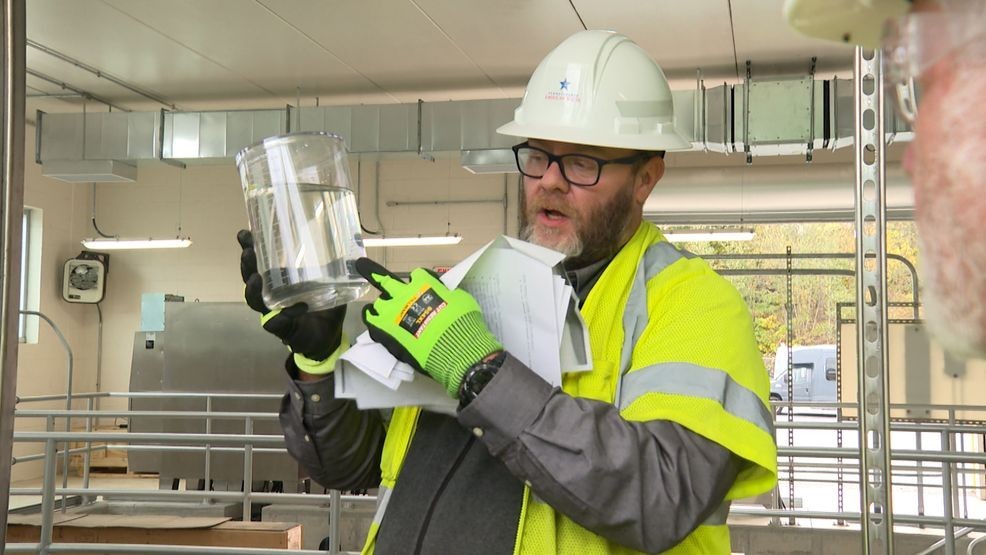SCRANTON, LACKAWANNA CO. (WOLF) — You pay your water bill every month but once you flush the toilet, where does it go? Well, if you live in Scranton or the borough of Dunmore, it most likely ends up the Scranton wastewater treatment plant, where ten million to sixty million gallons of wastewater is processed and cleaned every day.
Built in the 70s, Pennsylvania American Water at the Scranton wastewater treatment plant processes and cleans the water better than ever before thanks to a nearly ten year and 100-million-dollar overhaul.
First, the waste is sent to the plant via five pumps. On a normal day, the plant treats about 10 million gallons a day, but in the event of a flood or other large water event, it can handle up to 60 million gallons. After being pumped in, the waste goes through course, fine, and grit screening to get rid of any trash, gravel, and debris. Formerly three inches wide, now, the course screens are 3 quarters of an inch, meaning that more solids are being collected. The trash and grit are then collected, with literal tons of material getting sent to landfills.
Next, it’s put into setting tanks so fats and oils can be taken off the top, then into bioreactors where bacteria remove nitrogen and phosphorous. This is done because the water eventually ends up in the Chesapeake Bay and due to EPA regulations, the amount of the elements in the water released needs to be regulated. After processing, the water no longer has the elements that damage the watershed.
After, the wastewater is flowed through multiple tanks to get rid of the solids still remaining. This process removes around 40 tons of sludge every day which, once processed, is sent to landfills. The water is then aerated to increase dissolved oxygen levels and finally disinfected with UV light to kill the last of the harmful bacteria. Before the renovation, the plant used dangerous chemicals to kill the bacteria which would then have to be removed. This switch isn’t just more convenient; it is also safer for the workers in case an incident with the chemicals ever happened.
When the wastewater comes to the facility it has about 200 milligrams per liter of solids in it. After being treated and finally released into the Lackawanna River, the amount of solids is about 1 to 2 milligrams per liter, safe enough to swim in and possibly even drink (though not recommended).
In total, the investment has led to cleaner water, a safer workplace due to the removal of dangerous chemicals from the process, and the ability to treat more water than ever before; and when 51% of the flow in the Lackawanna River is from the plant, the cleaner, the better.
“Our responsibility as good stewards of the environment are to maintain investments, to keep this facility upgraded and operating properly, to make sure that this doesn’t, we don’t have issues in the city and we’re also expanding capacity. So, there’s room for growth,” said Daniel Rickard, director of engineering at the plant.
The investments are expected to last the plant for the next 50 years meaning that Lackawanna County waterways are cleaner than they ever have been and will be for decades to come.

